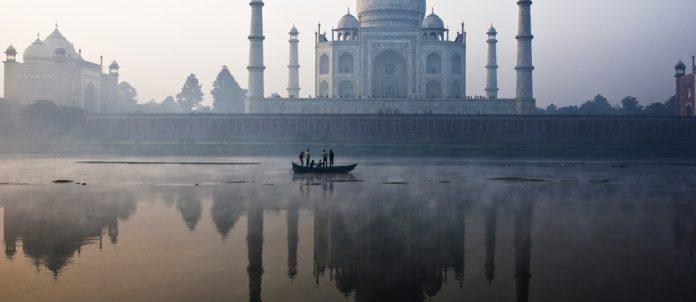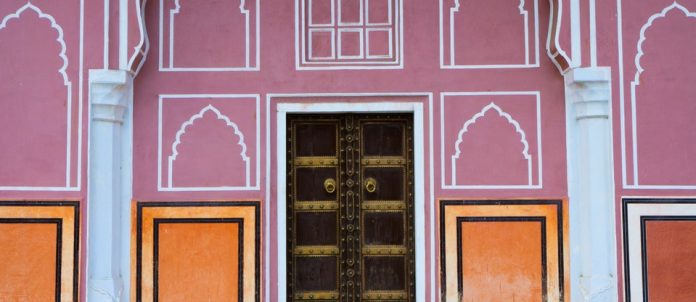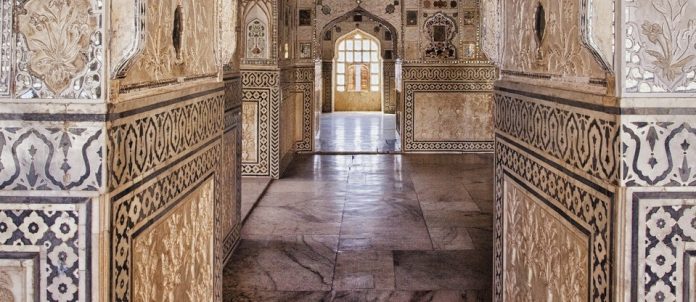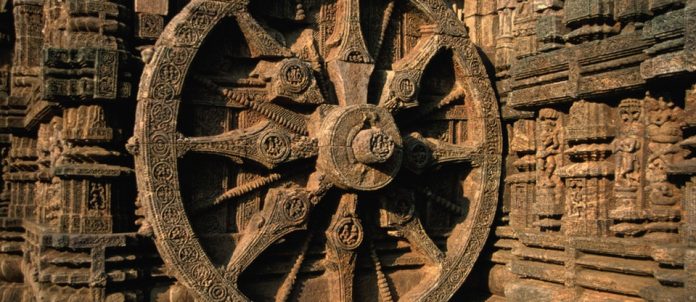With its sumptuous mix of traditions, spiritual beliefs, festivals, architecture and landscapes, your memories of India will blaze bright long after you’ve left its shores.
India’s Great Outdoors
India’s landscapes are as fantastically varied as its cultural traditions. From the snow-dusted peaks of the Himalaya to the sun-splashed beaches of the tropical south, the country has a bounty of outdoor attractions. You can scout for big jungle cats on scenic wildlife safaris, paddle in the shimmering waters of coastal retreats, take blood-pumping treks high in the mountains, or simply inhale pine-scented air on meditative forest walks. Among all these natural treasures is a wealth of architectural gems, from serene temples rising out of pancake-flat plains to crumbling forts peering over plunging ravines.
Delicious Cuisine
Indian cuisine is a scrumptious smorgasbord of regionally distinct recipes, each with their own traditional preparation techniques and presentation styles – from the competing flavours of masterfully marinated meats and thalis (plate meals) to the simple splendour of vegetarian curries and deep-sea delights. Spices lie at the heart of Indian cooking, with the crackle of cumin seeds in hot oil a familiar sound in most kitchens. The country is also renowned for its tempting array of street food, with vendors selling everything from spicy samosas and kebabs to cooling kulfi (ice cream) and lassi (yoghurt drink).
Soul Warming
Spirituality is the ubiquitous thread in India’s richly diverse tapestry, weaving all the way from the snowy mountains of the far north to the tropical shores of the deep south. Hinduism and Islam have the most followers, while Sikhism, Buddhism, Jainism, Christianity and Zoroastrianism are also widely practised. The array of sacred sites and rituals pay testament to the country’s long and colourful religious history. And then there are its festivals! India has an abundance of devotional celebrations – from formidable city parades heralding auspicious religious events, to simple village harvest fairs that pay homage to a locally worshipped deity.
Top Sights in India
Taj Mahal
Poet Rabindranath Tagore described it as ‘a teardrop on the cheek of eternity’; Rudyard Kipling as ‘the embodiment of all things pure’; while its creator, Emperor Shah Jahan, said it made ‘the sun and the moon shed tears from their eyes’. Every year, tourists numbering more than twice the population of Agra pass through its gates to catch a once-in-a-lifetime glimpse of what is widely considered the most beautiful building in the world. Few leave disappointed.
The Taj was built by Shah Jahan as a memorial for his third wife, Mumtaz Mahal, who died giving birth to their 14th child in 1631. The death of Mumtaz left the emperor so heartbroken that his hair is said to have turned grey virtually overnight. Construction of the Taj began the following year; although the main building is thought to have been built in eight years, the whole complex was not completed until 1653. Not long after it was finished, Shah Jahan was overthrown by his son Aurangzeb and imprisoned in Agra Fort, where for the rest of his days he could only gaze out at his creation through a window. Following his death in 1666, Shah Jahan was buried here alongside his beloved Mumtaz.
• Entry & Information
Note: the Taj is closed every Friday to anyone not attending prayers at the mosque.
The Taj can be accessed through the west and east gates. The south gate was closed to visitors in 2018 for security concerns but can be used to exit the Taj. The east gate generally has shorter queues. There are separate queues for men and women at both gates. If you are a foreigner, once you get your ticket, you can skip ahead of the lines of Indians waiting to get in – one perk of your pricey entry fee. It’s possible to buy your tickets online in advance at https://asi.payumoney.com (you’ll get a ₹50 discount for your troubles), but you won’t save much time as you still have to join the main security queue. A ticket that includes entrance to the mausoleum itself cost ₹200 extra.
Cameras and videos are permitted, but you can’t take photographs inside the mausoleum itself. Tripods are banned.
City Palace
A complex of courtyards, gardens and buildings, the impressive City Palace is right in the centre of the Old City. The outer wall was built by Jai Singh II, but within it the palace has been enlarged and adapted over the centuries. There are palace buildings from different eras, some dating from the early 20th century. It is a striking blend of Rajasthani and Mughal architecture.
Amber Fort
This magnificent fort comprises an extensive palace complex, built from pale yellow and pink sandstone, and white marble, and is divided into four main sections, each with its own courtyard. It is possible to visit the fortress on elephant-back, but animal welfare groups have criticised the keeping of elephants at Amber because of reports of abuse, and because carrying passengers can cause lasting injuries to the animals.
Sun Temple
Conceived as the cosmic chariot of the sun god Surya, this massive, breathtakingly splendid temple was constructed in the mid-13th century, probably by Odishan king Narashimhadev I to celebrate his military victory over the Muslims. Around the base, seven rearing horses (representing the days of the week) move the stone leviathan on 24 stone cartwheels (representing the hours of the day). The temple was positioned so that dawn light would illuminate the deul (temple sanctuary) interior and the presiding deity.
Brihadishwara Temple
Come here twice: in the morning, when the honey-hued granite begins to assert its dominance over the white dawn sunshine, and in the evening, when the rocks capture a hot palette of reds, oranges, yellows and pinks on the crowning glory of Chola temple architecture. The World Heritage–listed Brihadishwara Temple was built between 1003 and 1010 by Raja Raja I (‘king of kings’). The outer fortifications were put up by Thanjavur’s later Nayak and British regimes.
Golden Temple
The legendary Golden Temple is actually just a small part of this huge gurdwara complex, known to Sikhs as Harmandir Sahib. Spiritually, the focus of attention is the tank that surrounds the gleaming central shrine – the Amrit Sarovar, from which Amritsar takes its name, excavated by the fourth Sikh guru, Ram Das, in 1577. Ringed by a marble walkway, the tank is said to have healing powers, and pilgrims come from across the world to bathe in its sacred waters.




